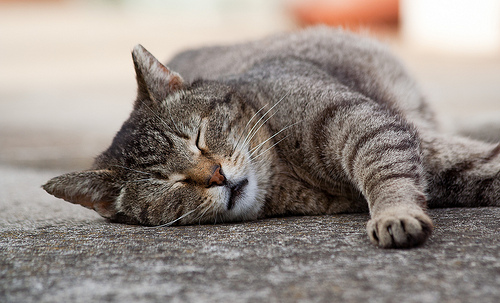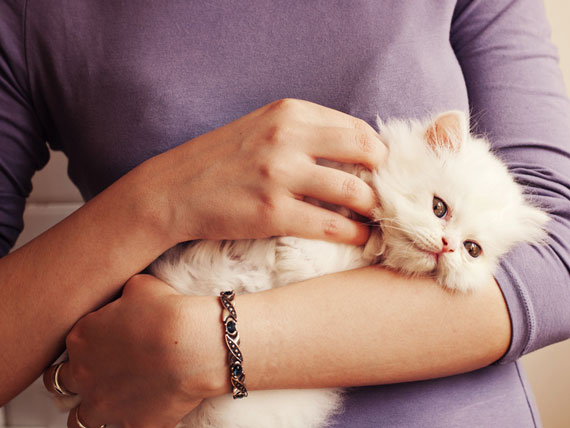Cat scratch disease (CSD) is a bacterial disease caused by Bartonella henselae. The bacteria can be passed from a cat to a human. Most people with CSD have been gnawed or scratched by a cat and developed a mild infection at the point of injury. Cat scratch disease occurs more often in the fall and winter. In the United States, about 22,000 cases are diagnosed annually, most of them in people under the age of 21. This may be because children are more likely to play with cats and be bitten or scratched. More than 90% of people with the illness have had some kind of contact with cats, often with kittens.
Most people with cat scratch disease recollect being around a cat. A blister or a small bump develops several days after the scratch or bite and may be mistaken for an insect bite. This blister or bump is called an inoculation lesion , and it is most commonly found on the arms and hands, head, or scalp. These swollen lymph nodes appear most often in the underarm or neck areas, although if the inoculation lesion is on the leg, then the nodes in the groin will be affected. They range in size from about inch to 2 inches (1 to 5 centimeters) in diameter and may be surrounded by a larger area of swelling under the skin.
The skin over these swollen lymph nodes may become heat up and red, and occasionally the lymph nodes drain pus. In most children and adolescents, swollen lymph nodes are the main symptom of the disease, and the illness often is mild. These include fever (usually less than 101 Fahrenheit or 38.3 Celsius), fatigue, loss of appetite, headache, rash, sore throat, and an overall ill feeling. In rare cases (1%-5%), cat-scratch disease can cause complications such as an irreversible inflammation of the eye or seizures (convulsions). Cats require no treatment. The bacteria doesn't cause cats to get sick.
Cat scratch disease is more serious, and treatment with antibiotics is recommended. Azithromycin, ciprofloxacin, doxycycline, and multiple other antibiotics have been used successfully. If your child feels like playing, encourage quiet play while being careful to avoid injuring swollen lymph nodes. Avoid "rough play" with cats, especially kittens. This includes any activity that may lead to cat scratches and bites. Wash cat bites and scratches immediately and thoroughly with running water and soap. Do not allow cats to lick open wounds that you may have. Avoiding cat saliva will lessen the risk of infection.

 Senior Cats: A Few Things To Keep In Mind
Taking Care of Your Furry Senior Kitizens
&nb
Senior Cats: A Few Things To Keep In Mind
Taking Care of Your Furry Senior Kitizens
&nb
 5 Steps to Success as a New Pet Parent
1. PET-PROOF YOUR HOME
Dogs and cats love to
5 Steps to Success as a New Pet Parent
1. PET-PROOF YOUR HOME
Dogs and cats love to
 Cat Questions - Common Cat Information
Cat Questions - Common Cat Information We see a number of qu
Cat Questions - Common Cat Information
Cat Questions - Common Cat Information We see a number of qu
 'Natural' Methods for Controlling Fleas in Cats
By Jennifer Kvamme, DVM
There are a lot of differe
'Natural' Methods for Controlling Fleas in Cats
By Jennifer Kvamme, DVM
There are a lot of differe
 Cat Care Tips
Cat Care Tips Cats are a popular pet for many reasons. But
Cat Care Tips
Cat Care Tips Cats are a popular pet for many reasons. But